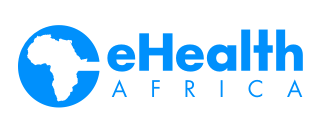By Abubakar Shehu and Emerald Awa- Agwu
Supplementary Immunization Activities (SIAs) are one of the four strategies put forward by the Global Polio Eradication Initiative (GPEI) in 1988. In Nigeria, SIAs include Immunization Plus Days (IPDs), Outbreak Responses (OBRs) and other immunization outreaches conducted by the Nigerian government and its polio eradication partners. The aim of SIAs is to interrupt the transmission of the poliovirus by immunizing all children under five years of age with two doses of oral polio vaccine irrespective of their previous immunization status—unimmunized, partially covered or fully immunized.
A child receiving the Oral Polio Vaccine
SIAs are intended to complement Routine Immunization. However, in some areas, they represent the major strategy for catching unimmunized children and ensuring that they are vaccinated against polio and other vaccine-preventable diseases. Access to routine immunization services may be hindered for a variety of reasons including:
Challenges with cold chain equipment leading to vaccine damage and loss of potency, and eventually, unavailability of vaccines. Caregivers are often reluctant to return to health facilities where vaccines were unavailable. This results in missed opportunities to commence or complete the vaccination course.
Security challenges that make health facilities hard to reach by caregivers who bring children for immunization.
Access-related challenges such as caregivers having to travel long distances to the health facility or being unable to afford the cost of transportation
Wrong myths or perceptions about vaccinations such as loss of fertility as a result of vaccination.
SIAs take immunization services directly to children at their doorsteps, thereby bridging any gaps that may result from an inability to access vaccines at the health facilities. By achieving a vaccination coverage of at least 80% (that is, by vaccinating at least 80% of the targeted children with a potent vaccine), herd immunity can be achieved and the poliovirus can be deprived of the susceptible hosts which it needs to survive.
Through Supplementary Immunization Activities, children who were missed by routine immunization services can be reached with life-saving vaccines
Prior to 2012, Nigeria had been conducting SIAs but was still recording cases of wild poliovirus (WPV). After a holistic examination of the immunization program, it was discovered that there was a huge disparity between the actual versus reported immunization coverage. Reports from independent monitoring and supervision groups showed that the actual vaccination coverage of the SIAs was much lower than the reported coverage. There were many missed settlements and an even larger number of missed children. It was discovered that some vaccination teams never visited the communities, instead, they would discard the vaccines and record false information in the tally sheets to account for the empty vials. Not only was this frustrating the polio eradication efforts, but it was also causing the health system huge losses as a result of the wasted vaccines.
It became imperative to develop a methodology to improve vaccination coverage and ensure that the vaccination teams visited all the target settlements during SIAs. This led to the development and deployment of the Vaccination Tracking System (VTS) in 2012.
VTS provides healthcare administrators and partners in the polio eradication space with daily insight into the activities of vaccination teams during SIAs by collecting passive tracks of the vaccination teams using Geographic Information Systems (GIS technology-enabled android phones and uploading them onto a dashboard for visualization. This provides stakeholders with near-live data about the geo-coverage of the vaccination campaign. The system also identifies missed settlements on a daily basis so that immediate action can be taken and the settlements can be included in the ongoing campaign. Another benefit of the VTS is that it increases the accountability of vaccination teams because the vaccinators know that they are under constant supervision. This greatly reduces the risk of data falsification.
The VTS dashboard provides decision-makers with near-real-time data about the progress of immunization campaigns and outreaches
So far, VTS has been used to track 82 supplementary immunization activities in 30 states of Nigeria. A significant proportion of these states have seen an exponential increase in the vaccination geo-coverage rates from the first campaign tracked to the last tracked campaign.
Increase in vaccination coverage rates
VTS makes sure that eligible children who, for any reason, are unable to receive their vaccinations through the routine immunization sessions at the health facilities, have a second chance to be protected against vaccine-preventable diseases like Polio and Meningitis.
















